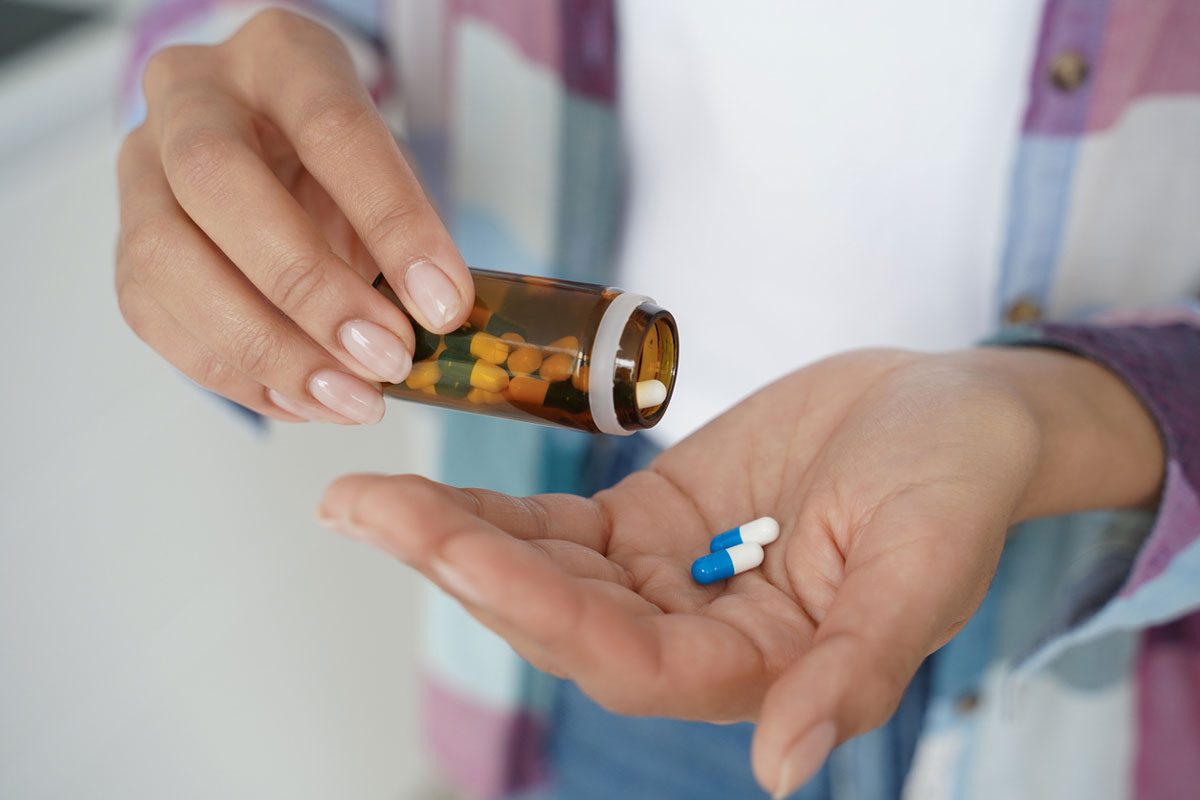Because this piece does not have an abstract, we have provided for your benefit the first 3 sentences of the full text.
To the Editor: Lithium is a drug established for treatment of affective disorder and is intended to mitigate and prevent depressive or manic episodes and diminish suicidal tendencies. However, lithium can induce neurologic sequelae following overdose or during maintenance therapy.
Neurotoxicity. Lithium neurotoxicity can be reversible or irreversible and may even be observed at therapeutic serum levels.
Enhance Your Understanding of Lithium Neurotoxicity
To the Editor: Lithium is a drug established for treatment of affective disorder and is intended to mitigate and prevent depressive or manic episodes and diminish suicidal tendencies. However, lithium can induce neurologic sequelae following overdose or during maintenance therapy.1,2
Neurotoxicity. Lithium neurotoxicity can be reversible or irreversible and may even be observed at therapeutic serum levels.3 Acute lithium toxicity initially affects fast-acting neurons controlling coordination, resulting in tremor and extremity dyscoordination. Increased toxicity may cause progressive development of slurred speech, muscular fasciculation, seizures, nystagmus, and extrapyramidal features.4 Delirium can be another manifestation, with obtundation in severe neurotoxicities.
Sustained serum lithium levels > 1.5 mEq/L can be associated with toxicity risk, but may not be at concentrations consistently high enough to induce nerve injury.4 Persistent concentrations > 2.5 mEq/L often induce neurologic complications, especially convulsions and cerebellar impairment.
Permanent lithium neurotoxicity is clinically documented.1,2,5,6 The syndrome of irreversible lithium-effectuated neurotoxicity is a permanent sequela of intoxication that presents with persistent cerebellar dysfunction.6 Other significant neurologic complications also can be observed.7 Demyelination occurs at various sites, especially the cerebellum, causing dystaxia and dysarthria.8 Permanent cerebellar and pyramidal cell dysfunction can result.
Pharmacology. Lithium enters the circulation and is distributed widely and primarily intracellularly. The mechanisms of action include changes at cell membranes, alteration of serotonin and norepinephrine actions, and influences on phosphatidylinositol metabolism.4 However, when serum lithium levels are in overtly toxic ranges, lithium further accumulates in the brain and kidney, causing dysfunction, but does not always reflect degrees of neurotoxicity. Serum concentrations do not correlate well with neuronal levels. The implications of an individual assay must include a relation to the timing of previous lithium administrations, with standardized determinations based on approximately 12 hours after the last ingestion.
Lithium is excreted by the kidney, and this process is strongly influenced by sodium and water excretion. The lithium half-life is approximately 18 hours in young adults and 36 hours in healthy elderly people,7 and it varies according to renal function and hydration. Some pharmaceutical interactions enhance lithium retention, most prominently the diuretics like hydrochlorothiazide, secondary to sodium wasting. Angiotensin converting enzyme inhibitors decrease glomerular filtration and increase tubular reabsorption of lithium. Nonsteroidal anti-inflammatory drugs interrupt renal prostaglandin synthesis, retarding lithium excretion.7 Lithium acts synergistically with neuroleptic drugs in the development of neuroleptic malignant syndrome.8 Clinical conditions involving dehydration and impaired renal status diminish lithium excretion and increase the risk of neurotoxicity.
Management. Lithium toxicity is usually avoided through conservative prescribing, patient education, and close clinical and laboratory monitoring.9 Patients administered lithium should understand drug interactions, the need for adequate hydration, and how to contact their physician. Doctors must consider coexistent renal or cardiac failure and brain diseases that might predispose toward toxicity.
Minor intoxications are mitigated by oral hydration and adequate electrolyte ingestion. In more severe cases, intravenous saline is instituted. At progressively greater toxicities, cathartics and lavage with charcoal are considered. When dangerous sequelae are feared, hemodialysis is indicated to forestall neurotoxicity.10 The serum lithium concentration may exhibit a rebound during treatment.11 Rebound in lithium toxicity cases means that serum levels that were once lower, often rise again, reflecting stores of higher lithium concentration within cells, including those of the central nervous system—that can result in later observing rising serum lithium levels and thus implies continued lithium neurotoxicity.
References
1. Kores B, Lader MH. Irreversible lithium neurotoxicity: an overview. Clin Neuropharmacol. 1997;20(4):283-299. PubMed doi:10.1097/00002826-199708000-00001
2. Verdoux H, Bourgeois M. Irreversible neurologic sequelae caused by lithium. Encephale. 1991;17(3):221-224. PubMed
3. Netto I, Phutane VH. Reversible lithium neurotoxicity: review of the literature. Prim Care Companion CNS Disord. 2012;14(1):doi:10.4088/PCC.11r01197. doi:10.4088/pcc.11r01197 PubMed
4. Gill J, Singh H, Nugent K. Acute lithium intoxication and neuroleptic malignant syndrome. Pharmacotherapy. 2003;23(6):811-815. PubMed doi:10.1592/phco.23.6.811.32179
5. Newman PK, Saunders M. Lithium neurotoxicity. Postgrad Med J. 1979;55(648):701-703. PubMed doi:10.1136/pgmj.55.648.701
6. Adityanjee, Munshi KR, Thampy A. The syndrome of irreversible lithium-effectuated neurotoxicity. Clin Neuropharmacol. 2005;28(1):38-49. PubMed doi:10.1097/01.wnf.0000150871.52253.b7
7. Mohandas E, Rajmohan V. Lithium use in special populations. Indian J Psychiatry. 2007;49(3):211-218. PubMed doi:10.4103/0019-5545.37325
8. Edokpolo O, Fyyaz M. Lithium toxicity and neurologic effects: probable neuroleptic malignant syndrome resulting from lithium toxicity. Case Report Psychiatry. 2012;2012:271858. PubMed
9. Delva NJ, Hawken ER. Preventing lithium intoxication. Guide for physicians. Can Fam Physician. 2001;47:1595-1600. PubMed
10. El-Mallakh RS. Treatment of acute lithium toxicity. Vet Hum Toxicol. 1984;26(1):31-35. PubMed
11. Lum G. Lithium self-intoxication treated with hemodialysis. Lab Med. 2007;38(11):667-668. doi:10.1309/CGA4FKTUDK2JWF46
Author affiliations: Department of Psychiatry, University of Louisville School of Medicine, Louisville, Kentucky.
Potential conflicts of interest: None reported.
Funding/support: None reported.
Published online: June 4, 2015.
Prim Care Companion CNS Disord 2015;17(3):doi:10.4088/PCC.14l01767
© Copyright 2015 Physicians Postgraduate Press, Inc.
Please sign in or purchase this PDF for $40.00.





